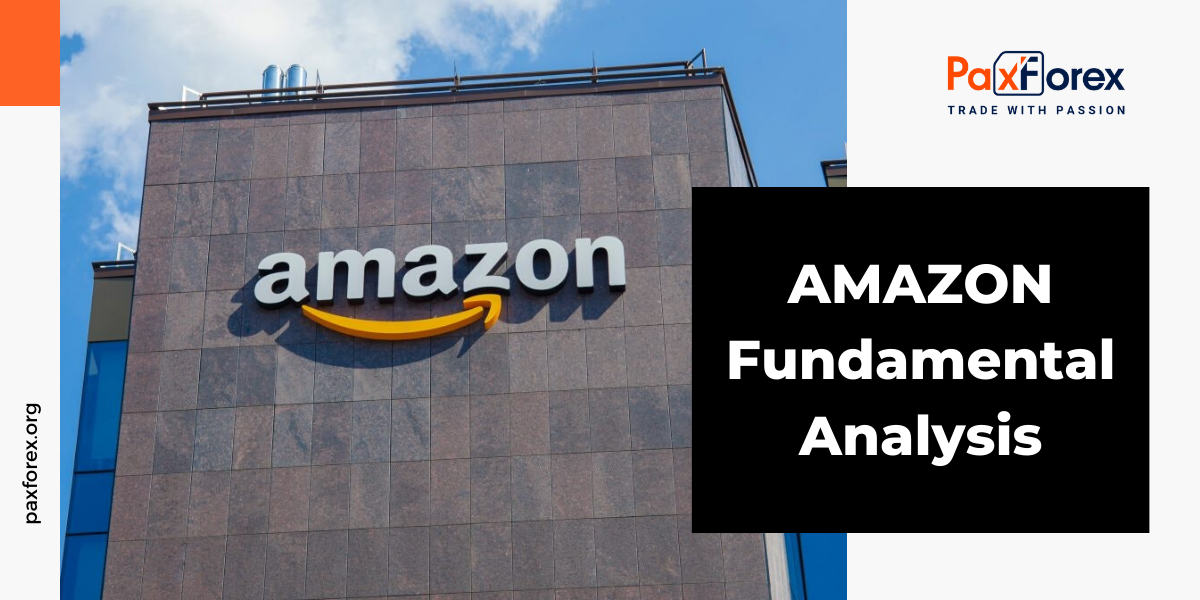
Source: PaxForex Premium Analytics Portal, Fundamental Insight
Amazon has been one of the best investments in the marketplace ever, providing returns in the hundreds of thousands over its two-and-a-half decades as a public company.
In the current unstable economy, Amazon has had some problems with both growth and profitability. How should we view Amazon stock in this market?
Amazon disappointed investors with its Q4 outlook in a recent report. But Q3 itself was strong, with sales up 15% despite pressure from inflation and a strong U.S. dollar.
Management expects Q4 sales to increase YoY as well, although mid-quarter growth is only 5%. Product sales, particularly during the holiday season, are built into this forecast.
However, AWS sales are also part of this forecast, and Q3 AWS growth declined slightly for the first time in a long time. Companies are feeling the effects of inflation, and it's affecting their ability to buy cloud solutions.
In the current economy, Amazon is doing its best to drive sales and look forward to better times ahead. The good news is that Amazon has a large moat that protects its business and gives it a huge opportunity for growth.
As of March, the company had more than 200 million Prime members. Since then, company updates have signaled a large number of new members, and that number could be much higher. Including Prime, Amazon says it has more than 300 million active accounts. These customers are active with Amazon's platform and are reliable sources of revenue.
Amazon said Prime day in July was its largest ever in terms of net sales. Amazon uses the money generated from this core business to power all of its other businesses, some of which are complementary and others entirely separate.
The company has immersed itself in new businesses through acquisitions and in-house developments, some of which have taken off and some of which have failed. Those that succeed, like AWS, more than makeup for those that don't.
This is how Amazon has built an empire that is much bigger than e-commerce, and this is how it will continue to dominate in the years to come.
Given rising inflation and the current economic problems, the hard times for Amazon may not be over yet.
The company is suffering from inflation for two reasons. First, Amazon is facing rising costs for the things it needs for its business - such as shipping packages. This is due to increased fuel and other related costs. Second, Amazon customers may be spending less as inflation puts pressure on their wallets.
Until recently, the spending problem was mostly about Amazon's e-commerce business. But in Q3, even Amazon's big profit driver, Amazon Web Services, showed slowing growth.
The cloud computing division said its customers had begun to cut back on their spending. And that means they're choosing less expensive options from AWS' suite of products. So AWS may not be able to keep Amazon out of the recession as much as it seemed at the beginning of the year.
All of this has had a negative impact on Amazon's earnings. In Q3, for example, the company's operating profit fell to $2.5 billion. That's about half of what it was in the previous quarter.
Amazon's operating cash flow has also been declining over the past few quarters. And free cash flow has declined by more than $19 billion over the past 12 months.
Still, Amazon is working to improve its cost structure and improve the performance of its delivery network. And it's important to remember that today's economic problems won't last forever. Nonetheless, Amazon will likely need some time to recover from the current situation -- and return to growth.
Amazon's leadership in e-commerce and cloud computing means that the company has good prospects. But at the same time, if you invest right now, you're going to be nervous for a while. That means cautious investors are better off waiting for signs of progress before buying Amazon stock.
Investors should not expect Amazon stock to show tremendous growth anytime soon. However, many stocks are in the same situation right now, and Amazon's difficulties as a business are not exceptional.
There are some valuable stocks and dividend stocks that are growing or providing passive income even as the stock market declines, and investors should have some of them in a diversified portfolio. If you have a long-term perspective, you can take advantage of Amazon's declining price.
As long as the price is below 110.00, follow the recommendations below:
- Time frame: D1
- Recommendation: short position
- Entry point: 100.69
- Take Profit 1: 90.00
- Take Profit 2:80.00
Alternative scenario:
If the level of 110.00 is broken-out, follow the recommendations below:
- Time frame: D1
- Recommendation: long position
- Entry point: 110.00
- Take Profit 1: 120.00
- Take Profit 2: 130.00













